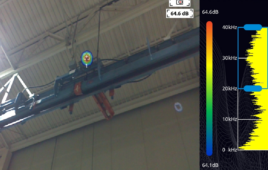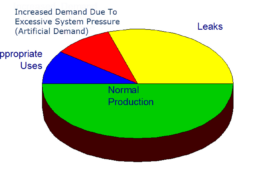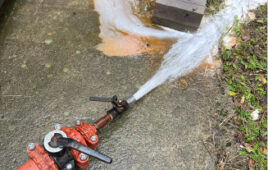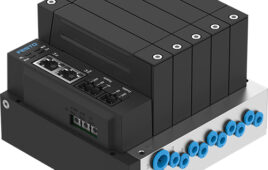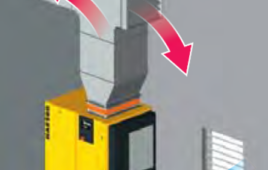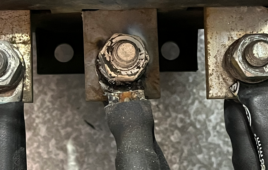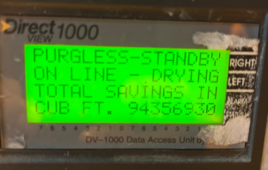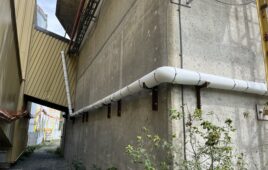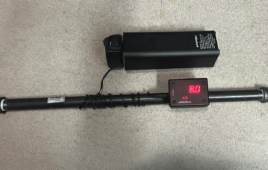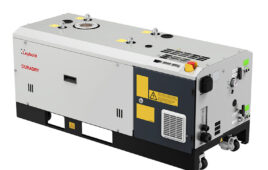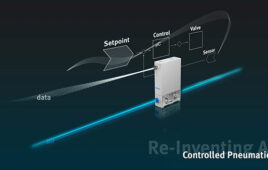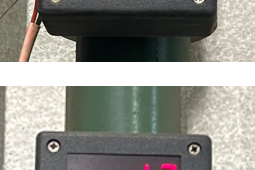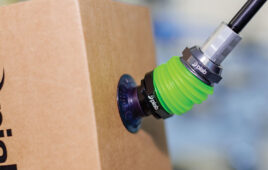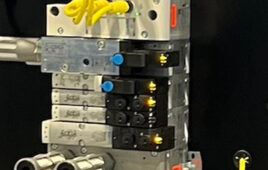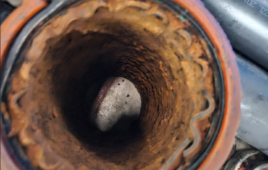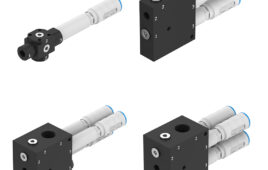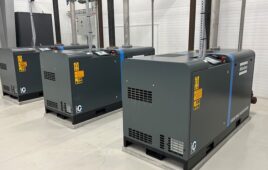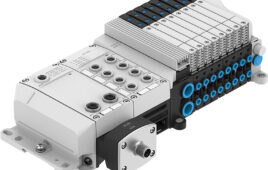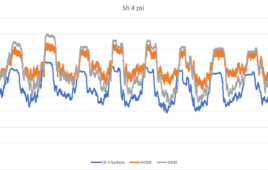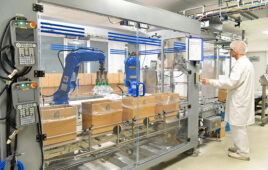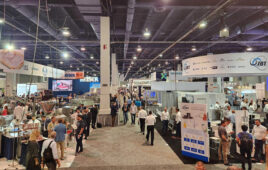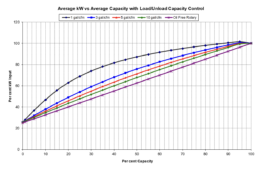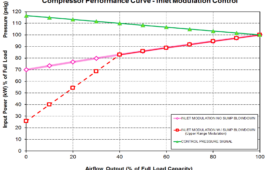The development of acoustic imagers has transformed the way compressed air leak audits are done, saving time for the user. Acoustic imagers are advanced tools used to detect gas leaks by capturing and visualizing high-frequency sounds that are typically inaudible to the human ear. When compressed air or gas escapes through cracks, holes, or loose […]
Compressed air fail: Inside the box thinking?
“Inside the box” thinking involves sticking to conventional methods and solutions that are tried and tested. For example: Routine maintenance: Regularly replacing filters and addressing leaks are standard practices to improve efficiency. Equipment upgrades: Replacing old compressors with newer, more energy-efficient models is a typical step. Basic monitoring: Installing pressure gauges and ensuring the system […]
Five big improvements for your compressed air system
By Ron Marshall Improving the efficiency of your air compressor system doesn’t always require a large investment. Small, cost-effective changes can lead to significant energy savings, reduced operational costs, and a longer system lifespan. Here are five practical and low-cost strategies to boost the efficiency of your air compressor. Fix leaks Air leaks are […]
Compressed air fail: Cold weather damage
Compressed air systems naturally generate condensate as moisture in the air condenses during compression and cooling. If this condensate is not properly managed, it can accumulate in the system, particularly in uninsulated outdoor pipes. During winter, when temperatures drop below freezing, this condensate can turn into ice, leading to significant operational and safety issues. Freezing […]
Festo officially launches its VTEP proportional valve terminal
Festo has officially introduced the VTEP, which it says is the world’s first proportional valve terminal, to the U.S. market. The VTEP is suitable for flexible gripping, web tensioning, force-controlled polishing, precision piloting, dispensing, dosing, and diaphragm pump control. This solution was discussed in our article on linear motion technologies in August, where the company […]
What temperature should a compressor room be during winter operation?
By Ron Marshall The short answer is “as cool as possible, but not below freezing.” The practical answer is uncomfortably cool, in the range of 50° to 60° F. Keeping the temperature low reduces the amount of condensed moisture in the discharge air and makes things easier for the air dryer. Compressors generate significant heat […]
Compressed air fail: Extra audit benefits
A compressed air auditor was performing his work at a large mining operation. He and the site electrician were opening up the various machine electrical panels to enable power factor testing. Within seconds of opening one compressor panel, the electrician jumped back with fright and informed the auditor he was going to be a while. […]
Compressed air fail: Desiccant dryers
When working with desiccant-style compressed air dryers, there are several factors to consider, to ensure optimal performance and efficiency. Desiccant dryers rely on two towers filled with desiccant material that alternately dry the air and regenerate, to maintain continuous operation. The regenerative purge is essential to removing the moisture collected by the desiccant, but it […]
Compressed air fail: Winter operation
Preparing an industrial compressed air system for cold winter conditions is essential to ensure reliable operation, prevent equipment failures, and avoid costly downtime. Cold weather introduces unique challenges, such as moisture buildup, freezing, and increased system stress — all of which must be addressed to keep the system running efficiently. Proactive preparation can safeguard your […]
Compressed air fail: Portable flow meter
When performing leakage detection on your compressed air system with your ultrasonic leak detector (if you don’t have one, good grief, run out and get one!), you will run across various leaks in piping and equipment. Many of these are small, so roughly less than $100 value per year. But quite often, you will find […]
Duradry dry screw vacuum pump is designed for harsh industrial use
Leybold’s new Duradry is a dry screw vacuum pump designed for medium-harsh industrial production processes where high temperatures, high oxygen contents and corrosive conditions prevail. Its features make it suitable for applications like crystal pulling, plasma cleaning, heat treatment, coating and battery production. “The pump’s main advantages are its ease of operation and low maintenance […]
Festo brings controlled pneumatics to the U.S. with digital closed-loop control
Last week, Festo introduced its Controlled Pneumatics, a digital closed-loop control strategy for delivering energy efficiency, high dynamic response, and precision movement. Controlled Pneumatics is a suitable solution for web tensioning; welding; surface processing; flexible gripping, including vacuum gripping; dispensing and pumping; PET bottle blowing; and diaphragm pump control. See a technical overview on how […]
Compressed air fail: Waste measured by flow meter
Do you know how much air your compressed air system is consuming? How about the level of waste during non-production? If you don’t, it may be time to purchase a flowmeter to find out the answers to these questions. Recently during a leak assessment, a compressed air auditor was surprised to see 46 cfm flowing […]
Piab’s FLC enhances capabilities of existing suction cups
Piab has launched its new piGRIP FLC interface that expands the usability of all existing Piab suction cups. “Regardless of application, this product helps handling height differences and off-angle-picking in a simplified yet sophisticated waym,” said Lennart Ryberg, Product Manager of Piab Vacuum Automation Division. FLC stands for ‘Flexible Level Compensator’ and is designed to […]
Festo introduces a robust suite of pneumatic safety solutions
Festo introduces an innovative suite of safety products, including its new CIP safety module, that ensures the safe operation of pneumatic systems and lowers the risk of injury and system and product damage. Festo pneumatic safety solutions are compatible with the top industrial Ethernet protocols – EtherNET/IP, PROFITNET, and EtherCAT – which gives them near […]
Compressed air fail: Pipe contamination
The typical piping installed in industrial plants and shops is made of steel, and as a result may be subject to rusting and contamination. Fig. 1 and 2 show what was found at a heavy industrial plant with the air compressors taking in polluted air. Rusting and contamination in compressed air system piping can lead […]
OVPN multistage pneumatic vacuum generator for porous materials
Festo has expanded its vacuum generation solutions to include for the first time a multistage generator and a multistage cartridge. These new vacuum components offer exceptional performance on porous materials, such as paper and corrugated board. The OVPN multistage vacuum generator and the OASP vacuum generator cartridge are ideal for such applications as overhead palletizing, […]
Norwegian fisheries rely on liquid ring vacuum pumps for packaging
Norway has a long tradition of catching and processing fish. The country ranks second in the world for exports behind China. To ensure the high quality of their freshly caught products, Norwegians pay particular attention to an unbroken cold chain. One company that contributes to a high level of food safety is Atlantic Styro. Based […]
Festo’s new VTUX valve terminal boasts modular design for flexible use
Festo introduced the new VTUX flagship valve terminal, which can serve as I/O, remote I/O, and decentralized I/O. These compact and rugged IP65/67-rated terminals can be located anywhere on a machine that boosts operational performance and original equipment manufacturer (OEM) installation productivity. VTUX modularity results in less inventory and lower overhead costs. VTUX is both […]
Compressed air fail: Pressure increase
Normally when measuring the pressure gradient of a compressed air system in an industrial site, the pressure at the compressor discharge is the highest of all locations. Once the compressed air travels through piping, filters, air dryers, and other components — each causing restriction to flow — the pressure at the far end of the […]
Improving packaging applications with pneumatic control
Increase efficiency and effectiveness by choosing the right pneumatic control or regulation product for accurate, repeatable results. By Mindy Schoeff, Marketing Communications Manager, Proportion-Air Facilities that manufacture packaging products, or those that do the actual packaging, are no strangers to pneumatic control. Whether pressing a product, filling it, conveying or moving materials, testing or sealing, […]
Pack Expo Chicago is ready for record numbers
The world’s largest packaging and processing show returns to Chicago’s McCormick Place November 3-6. Pack Expo International, scheduled for Nov. 3–6 at McCormick Place in Chicago, is set to be the largest packaging and processing show worldwide for 2024. According to PMMI, The Association for Packaging and Processing Technologies, the industry’s growth underscores the need […]
ELGi introduces next-generation, highly efficient EG series air compressors
ELGi North America has upgraded its EG series portfolio with the introduction of the EG Super Premium (EG SP) 90-110 range of oil-lubricated screw air compressors and the EG PM 11-45kW Permanent Magnet Synchronous Motor (PMSM) compressor. Engineered to meet the evolving demands of industries worldwide, the new units maximize energy savings and reduce environmental […]
Compressed air fail: Load/unload
In this blog post, we will discuss the third of five industrial compressor capacity control modes. A moderately efficient method of controlling a compressor at part load uses load/unload mode with adequately sized storage receiver capacity. With this mode, a pressure switch, or electronic control, is used to provide load and unload signals to the […]
Compressed air fail: Modulating mode
In this blog post, we will discuss the second of five industrial compressor capacity control modes. The least efficient method of controlling a compressor at part load is using modulating mode by way of pneumatically controlled inlet valve control. With this mode, a pneumatic system detects the compressor discharge pressure and compares it to a […]
